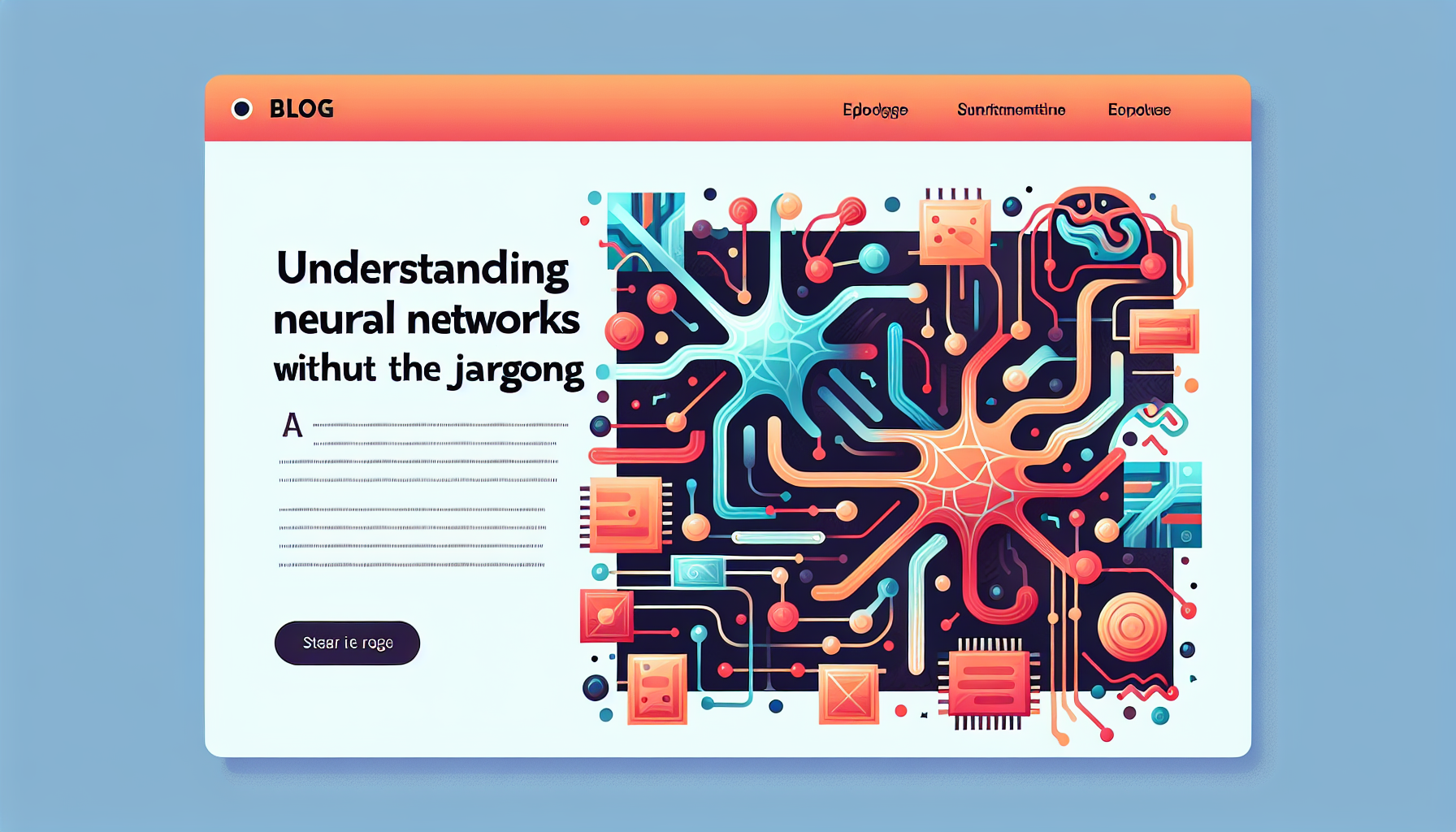Neural networks are a hot topic in the realm of artificial intelligence (AI) and machine learning. However, the complexity and technical jargon often make it hard for the average person to grasp what they really are and how they work. In this blog, we will break down the concept of neural networks into simple terms, using everyday analogies and examples to help you better understand this fascinating technology.
What Are Neural Networks?
At their core, neural networks are a set of algorithms designed to recognize patterns. They’re modeled loosely after the human brain, which is made up of billions of interconnected neurons. Just like our brains process information by sending signals between neurons, neural networks process data through interconnected nodes, or “neurons,” in a digital environment.
Imagine trying to teach a child to recognize different types of fruits. You would show them various fruits—apples, bananas, oranges—and explain the differences. Each time they see a new fruit, they compare it to what they’ve learned. Neural networks work in a similar way, learning from examples to make decisions or predictions.
The Structure of Neural Networks
To understand how neural networks function, it’s essential to know their basic structure. A typical neural network consists of three layers:
1. Input Layer: This is where the network receives data. Each node in this layer represents a feature of the input data. For example, if we’re trying to identify pictures of cats, the input layer might take pixel values from the image.
2. Hidden Layer(s): These layers are where the actual processing happens. A neural network can have one or more hidden layers, and each layer consists of numerous neurons that work together to analyze the input data. The more hidden layers a network has, the more complex patterns it can learn, akin to how we build layers of understanding in our brains.
3. Output Layer: This layer provides the final result of the neural network’s analysis. For instance, in our cat identification example, the output layer might indicate whether the input image is a cat or not.
How Do Neural Networks Learn?
The learning process of a neural network can be compared to trial and error. Initially, the network starts with random weights and biases—parameters that help determine the output. Here’s a simplified step-by-step breakdown:
1. Feedforward: The input data is passed through the network. Each neuron processes the input, applies a mathematical function (like a weighted sum), and passes the result to the next layer.
2. Prediction: The network makes a prediction based on the current weights and biases. For instance, it might predict whether an image contains a cat or not.
3. Error Calculation: The network compares its prediction to the actual result (the ground truth). If the prediction is wrong, it calculates the error. This is like a teacher grading a test and providing feedback to the student.
4. Backpropagation: The network adjusts its weights and biases based on the error. It essentially learns from its mistakes. This is akin to a student reviewing their errors and understanding where they went wrong to improve in the future.
5. Iteration: The process repeats multiple times with different data examples until the network can make accurate predictions.
Real-World Applications of Neural Networks
Neural networks have a wide range of applications in our daily lives. Here are a few examples that illustrate their practical use:
– Image Recognition: Platforms like Google Photos use neural networks to recognize faces and categorize images. When you upload a photo, the system can automatically tag people based on previous learning.
– Voice Assistants: Technologies like Siri and Alexa rely on neural networks to understand and process voice commands. They learn from countless interactions to improve their accuracy over time.
– Recommendation Systems: Netflix and Amazon use neural networks to analyze user behavior and recommend movies, shows, or products based on past preferences.
– Medical Diagnosis: In healthcare, neural networks assist in diagnosing diseases by analyzing medical images or patient data, often identifying patterns that humans may overlook.
Challenges and Limitations
While neural networks are powerful, they do come with challenges. One significant issue is the need for large amounts of data to train effectively. They may struggle with small datasets, leading to overfitting, where the model learns too much from the training data and fails to generalize to new data.
Additionally, neural networks can be seen as “black boxes,” meaning it’s often challenging to understand how they reach specific conclusions. This lack of transparency can be a concern, especially in critical fields like healthcare or finance.
Conclusion
Neural networks are an exciting and powerful tool in the world of artificial intelligence, enabling machines to learn from data and make predictions. By breaking down the concepts into relatable terms, we hope to have demystified this technology for you. As neural networks continue to evolve and integrate into various aspects of our lives, understanding their basics will empower you to engage with this technology more effectively.
Whether you’re a curious individual or someone looking to delve deeper into the AI world, grasping the fundamentals of neural networks opens the door to understanding how machines learn and make decisions, shaping the future of technology as we know it.

Leave a Reply